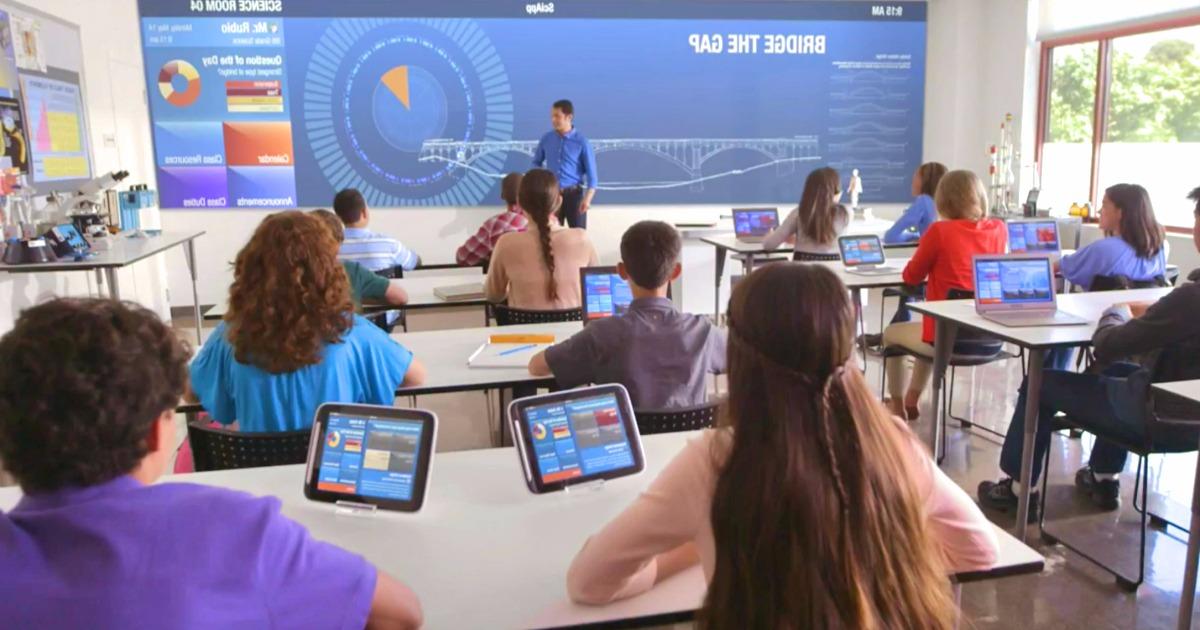future technology for schools
As we prepare our students for the ever-changing world, we must recognize the power of technology and its impact on education. The integration of technology in classrooms will open new doors that lead to unlimited resources for students and educators alike. In this article, we explore the key benefits of integrating technology into classrooms.
The Future of Technology in Schools
The future of education is digital, and technology is the key. The adaptation of technological advancements in schools will create a new form of education which is immersive and interactive. The use of technology in classrooms presents many benefits, including:

Benefits of Incorporating Technology in the Classroom
1. Enhances Learning and Teaching Process
Integrating digital tools in classrooms enhances the learning environment, which increases students’ curiosity, engagement, and understanding. Visual aids, such as images and diagrams, make learning more visual and appealing to students. Educators can also use instructional videos to explain complex topics in a more practical and understandable way.

Additionally, teachers now have the ability to track their students’ progress with more accuracy. Educational software, such as Learning Management Systems (LMS) and student information systems, provide teachers with data on how their students are progressing. This information can help teachers identify students who may be struggling and require additional support.
2. Enables Collaboration and Communication
Technology encourages multidirectional communication in classrooms, allowing students to share their ideas with one another, enhancing the learning process. Using tools such as discussion boards and digital whiteboards can promote collaboration and communication among students, which is beneficial not only for classroom learning but also for future careers.

Through technology, students can communicate and collaborate with their peers and teachers through social media platforms, which are accessible to anyone from anywhere at any time. This collaboration is beneficial to their learning in class and can also help students build strong networks and relationships that may help them in the future.
3. Increases Connectivity to the Real World
Integrating technology in classrooms facilitates access to different experiences, resources, and ideas, exposing students to the real world. Video conferencing provides students the opportunity to have interaction with professionals that may not be possible otherwise, while virtual reality contributes to simulations that cannot be done with traditional classroom methods.

Incorporating technology in classrooms also promotes global awareness and cultural competence. Students can interact with people and materials from around the world, creating new opportunities for learning and growth. This virtual exchange encourages them to become more sensitive to historical, social, and cultural differences.
4. Promotes Personalized Learning
Every student learns differently, and technology in the classroom presents an opportunity for educators to personalize lesson plans for each student. Computer programs can adapt to each student’s pace and comprehension level, allowing students who are ahead to advance and those who are behind to receive additional support.

Also, the integration of technology allows students the chance to learn more independently than under traditional teaching methods. This enhanced freedom helps students develop a sense of responsibility and self-discipline required for lifelong learning.
Conclusion
Integrating technology into education creates an interactive and immersive learning experience beneficial to both students and educators. By enhancing the learning environment, encouraging collaboration among peers, increasing connectivity to the real world, and promoting personalized learning, the possibilities for technology in the classroom are limitless.
Our goal as educators is to adapt and prepare our students for the future, and technology is the key to this continued success. As we continue to embrace the implementation of technology in the classroom, we open new doors and possibilities for our students, better preparing them for the challenges and opportunities of tomorrow’s world.

Source image : rachelfurze.com

Source image : infinigeek.com

Source image : www2.deloitte.com






